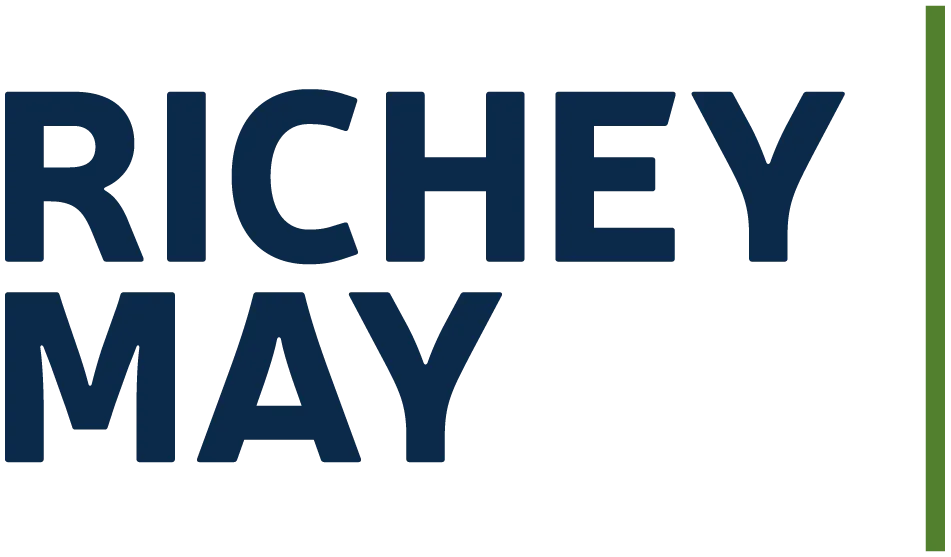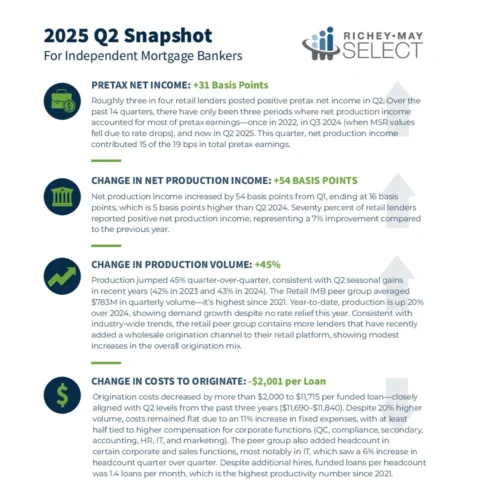As part of our Capital Education Series, two of Richey May’s Alternative Investments tax experts, Sean Sawey and Dan Flores, answer all your most frequently asked questions around contributed securities in our newest video.
This video covers topics around contributions in-kind and their potential tax impacts, including:
- Contributions in-kind tax implications
- When a contribution in kind-becomes taxable
- Built-in gain
- Diversification tests
- And more!
Richey May is dedicated to sharing best practices and trends in the industry to help you stay competitive in your marketplace. Please visit our page to see additional resources we have created for you in our series.
For more information about the Capital Education Series, or to recommend topics to be covered during the series, please contact Steve Vlasak.
Transcript:
Steve: Hi everyone. For anyone doesn’t know me, my name is Steve Vlasak I’m a partner here at Richey May in our alternative investments practice. In case you don’t know who Richey May is, we’re a CPA firm that specializes in alternative investments providing audit and tax services to over 100 fund structures. At the start of this year, we launched our Capital Education Series because the topic of capital raising always comes up when we speak to our clients and friends in the industry. This series is designed as an educational resource and features experts on the detailed topics we cover related to capital raising. This will be part seven of the series, which features our tax team here at Richey May who will be discussing the topic of contributed securities as an additional way to bring on capital. We hope you find this beneficial.
Sean: Hi, I’m Seann Sawey and I’m a tax director in the alternative investment practice here Richey May. Today I’ll be chatting with Dan Flores who is a tax manager for the alternative investment team. We’ll be discussing contributions in-kind and their potential tax impacts.
Dan: Hey Sean. As Sean mentioned, I’m a tax manager here at Richey May and today we’re going to be talking about contributions in-kind and the tax implications. So, to jump right in, Sean, can an investor or limited partner contribute appreciated assets such as stocks or bonds into a hedge fund or an Investment Partnership without creating a taxable event?
Sean: That’s a great question, Dan. Generally speaking. Yes, an investor can contribute appreciated assets in-kind to a partnership without it creating a taxable event. It’s very common in the alternative investment space that we see investors who have highly appreciated financial assets that would like to contribute them in-kind into a fund and delay or defer gain recognition. Also, to note, it’s extremely uncommon for investors to look to contribute assets that have depreciated in value, as it’s likely more beneficial that those investors could sell those assets outside of the fund, take the loss, and then contribute the cash proceeds from the sale into the investment partnership.
Dan: Well Sean, this begs the question, when does a contribution in-kind become taxable to them?
Sean: Generally, the built-in gain on the in-kind contribution is taxable to the contributing partner when the fund ultimately sells or disposes of the asset that was contributed in-kind. The contribution could be taxable at the time of contribution if the diversification test is failed, and I’ll speak to that more in a minute. The built-in gain could also become a taxable event if the investor that made the contribution in-kind subsequently redeemed cash from the fund within two years of making the initial contribution. The built-in gain would also be taxable if the securities that were contributed in-kind words subsequently distributed in-kind to another partner, not the partner that contributed, and if this happens within seven years of the initial contribution date, that would trigger gain recognition. These rules were put in place by the IRS to ensure investors were not swapping securities without gain recognition. If you contributed securities in-kind and another partner contributed securities in-kind and then subsequently you redeemed securities in-kind, and that other investor did the same, you could effectively swap securities without recognizing gain.
Dan: Sean, you also mentioned the diversification tests. Can you please explain that a little bit more?
Sean: Absolutely so. In order to not trigger a gain recognition, event contribution in-kind would need to be diversified or pass the diversification test. That diversification test really comes down to this. If, in the aggregate, the stock or securities of one issuer does not constitute more than 25% of the value of the contributed asset and the stock and securities of five or fewer issuers do not constitute more than 50% of the income and assets. This is something you, as the fund manager and your investor would want to confirm before agreeing to take these assets in-kind. Also, please note that this is the responsibility of the fund manager to make sure all of the necessary information to track the built in gain is provided to you or your fund administrator before accepting the contribution in-kind from an investor. So for example, out of the positions you are contributing in-kind, one position cannot represent more than 25% of the value of the contributed assets. So, if you if you are contributing 10 assets into the fund, the largest asset where the largest market value share can be no greater than 25% of the total.
Dan: Sean, you mentioned that some of the information needs to be tracked by the fund manager. What specific information would we need from a fund manager and what specific information would we need from the investor or the limited partner?
Sean: Great question Dan. Generally speaking, we need a detailed report of all of the assets that will be transferred in-kind into the fund with the following information needed to be provided. We will need the original purchase date for each and every tax lot that is contributed in-kind. We will need the original cost basis for each and every tax lot, the market value at the data contribution, again for each and every tax lot, the difference between these two amounts, the market value in the original cost basis is what we referred to as built in gain. Once the position or positions are sold, the amount of building gain would be allocated back to the contributing partner. The quantity of shares for each and every tax slot and a description of the assets contributed into the fund will also need to be provided, such as the name of the issuer or the ticker symbol. This is generally provided to us in an Excel format on a per tax slot basis on a per investor basis. This information can generally be obtained by the investor from their brokerage statement or from their broker.
Dan: So that covers the fund manager and the investors. Is there anything that the fund admin needs to do?
Sean: Absolutely, the fund administrator will need to make sure they are carrying over the original purchase date. So, when these assets are ultimately sold, we can calculate the correct holding period and whether the gain or loss would be short term or long term in nature. This is important because the fund administrator may need to manually enter this information into their system. The open date or the purchase date of the contribution is not the date that should be shown on their annual reports. You should certainly make the administrator aware of the contributions in- kind before accepting them, as this does create extra work and extra tracking of the tax lots. We suggest that you make sure to discuss this with your fund administrator well in advance of accepting an in-kind contribution. You and your administrator should also be keeping a detailed list of what tax lots were sold in a given year for the contribution in-kind positions so they can provide this information to your CPA firm. This will allow your CPA firm to do the proper tax calculations at the end of the year and make sure any built-in gain or loss recognized is properly allocated back to the contributing partner. The administrator would record the contributions in-kind at their fair market value on the date of contribution. And that would be the investors initial contribution into the fund from a gap or book perspective. And for example, if the portfolio the investor was contributing, how to cost basis to that investor of $250,000 but had a fair market value of $400,000, the $400,000 would show as their initial contribution into the fund with $150,000 of built-in gain. The difference between the 400 and the 250 being allocated back to that investor at a later date when the positions are actually sold.
Dan: Sean, you mentioned that the admin will record the holding period on the as the date of contribution, does that mean the holding period doesn’t carry over? Or is it reset?
Sean: Great question Dan. The holding period actually does tack or carry over, so the original purchase date moves over with those securities and this is extremely important as many of these contributions in-kind have already reached long term status. You as a fund manager one want to make sure to preserve the aging of these securities and make sure you’re getting the best possible tax rate on these investments once sold. Currently long term rates are lower than short term rates, so making sure the appropriate or correct initial purchase date is recording is extremely important. This is another reason while having your fund administrator and CPA firm on the same page from day one is of vital importance.
Dan: So what purchase date for contribution in-kind positions should the fund admin show on their reports to you?
Sean: That would be the original purchase date, again of when those assets were initially acquired by the limited partner and not the date the positions were transferred or contributed in-kind. Many times we see the broker not showing the correct original open date on the 1099 issued to the fund at the end of the year, so it’s extremely important that the fund manager is tracking those dates in the fund’s official books and records. You should also have the investor confirm with their broker that they can facilitate an in-kind contribution. There are some brokerages that can only transfer in-kind securities if the fund and investor are both using the same brokerage. For example, Interactive Brokers historically has only been able to accept in-kind contributions. If both the fund and the investor have an interactive brokerage account.
Dan: So what cost basis should the fund administrator use?
Sean: Good question Dan. For a book or GAAP perspective, the cost basis the fund will record on its books and again not to be confused with the separate tracking of the contribution in-kind positions from a tax perspective should be the fair market value at the date of contribution.
Dan: Is there an additional cost that the fund would incur when taking on a contribution in-kind?
Sean: Yes, both your fund administrator and your CPA firm will likely charge an extra fee to track this data, at least until all of the contribution and kind positions are solved. Depending on the amount of securities that are contributed in-kind, there potentially can be a lot of extra work and time incurred to track and properly allocate these gains back to the correct partners once these positions are sold. The costs will ultimately depend on the number of tax lots that were contributed and how many investors are contributing and kind. It will also depend on how long these positions are held once contributed in-kind into the fund. Again, accurate record keeping is extremely important to keep these costs as low as possible. The better information you can provide to your admin and your CPA firm, the easier it will make the tracking of these positions and the less cost you should incur.
Dan: So Sean, since all the tracking is a little bit different than you know what the original investor held. How do we allocate built in gain back to the contributing partners when the assets are sold?
Sean: Thanks, Dan. Another great question. When the contribution in-kind tax lot is sold, any built in gain associated that with that lot will be allocated back to the contributing partner. For example, an investor contributes a diversified portfolio of securities to the fund. The Fund sells one of these contributed tax lots in the first year. For example, let’s say the position is ABC stock that was originally purchased back in 2015 for $250 a share. When the investor contributed the position in-kind, it was worth $500 per share. Today the sale date it’s worth $1000 per share. Since the position was held longer than a year, all of the gains first off are going to be long term in nature. Back to being very important to tracking the original purchase date. The original built in gain of $250. The difference between the $500 fair market value in the $250 initial cost basis would be directly allocated back to that contributing partner first. The remaining gain of $500, the difference between the current sale price of $1000 and the $500 market value at data contribution, would be allocated to all the partners in the fund. Please note, this would all be subject to the tax allocation methodology as defined by the limited partnership or operating agreement. This would ensure the contributing partner did in fact pick up their built-in gain at the time of sale, and it’s very important that this is being tracked by the fund manager so that they are aware of what positions they’re selling as to not create any unnecessary gain or to recognize gain on contributed securities earlier than they had anticipated.
Dan: Sean, are there any potential pitfalls or negative aspects of contributing in-kind?
Sean: Yes, Dan, another good question there. There’s certainly some pitfalls to watch out for. I’ll touch on a few here because first and foremost, the fund administrator and the broker should always be using the same tax lot relief methodology to ensure that the securities the fund manager intends to sell are in fact the ones the broker are showing sold at year end. This is easy to do when you make sure your broker and your fund administrator on the same page. Common methods are FIFO, LIFO, mintax, high cost, specific identification, whatever method you’re using. We just suggest that you make sure your fund administrator and your broker are on the same page. With that you want to make sure you are using a fund admin that is capable of providing full reporting services and not in NAV light type service. While the NAV light service may be less expensive, the detailed security sale information will not be available and will honestly make it next to impossible to properly track these sold positions. Another thing to note is when you do decide to dispose of a tax lot of securities, it’s best to fully dispose of that lot rather than do a partial sale. The reason for it is it makes tracking and record keeping extremely difficult. For example, if an investor contributed 10 different tax lots with 100 shares in each slot and you wanted to sell some of those positions, we would recommend selling the full tax lot at one time rather than selling a few shares in each slot again. Making the tracking of this more burdensome and more expensive for you as a fund manager. You also want to make sure to involve your CPA broker in fund administrator upfront before accepting any contributions in-kind. It’s imperative to do this correct initially because you’ll avoid so many issues later on. One other important thing to note is if your intent is to sell all of the in-kind positions in year one. We would recommend advising the investor of this fact upfront. It may be more practical for them to sell the position outside the fund and contribute cash. It would likely not make sense to do all the extra work and incur all of the extra costs just to go and sell these positions off before the end of the year. In some scenarios it may make sense to still take a position in-kind even with this intent if the positions were very close to hitting long term status and selling them before contributing them in-kind would create a short term capital gain rather than a long term capital gain. If they were held for a few more months. Dan, thanks for those questions. Those were great. In closing, we’re here and happy to help. If you have any questions on contributions in-kind or any questions related to your audit and tax needs. Also, please note this discussion today was specifically related to non-digital assets in-kind contributions. While many of the concepts are the same, digital assets present some unique challenges and we recommend that you reach out to us to set up a call to discuss in more detail. Thanks for watching and have a great day.





